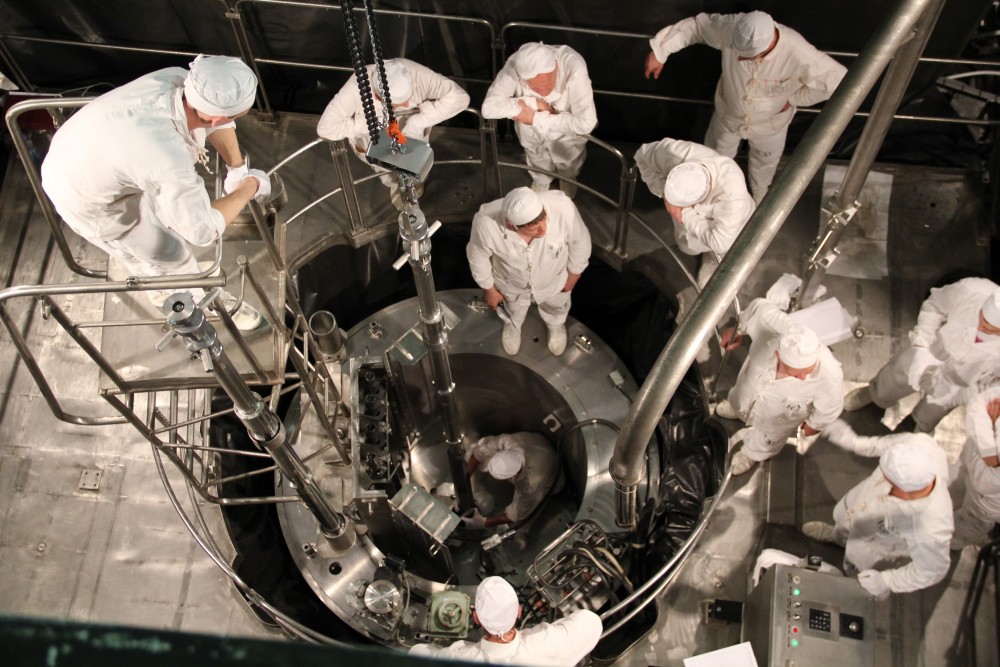Russia’s president Vladimir Putin has reportedly approved a plan to power a far eastern copper mining venture by building as many as five floating nuclear power plants, according to a report in the RBC business newswire, marking a major advance in Moscow’s ambitions for its most controversial energy source.
Russia’s president Vladimir Putin has reportedly approved a plan to power a far eastern copper mining venture by building as many as five floating nuclear power plants, according to a report in the RBC business newswire, marking a major advance in Moscow’s ambitions for its most controversial energy source.
The exact timeline for the $2.2 billion plan remain vague, but according to RBC, Putin signaled his approval to build the plants in response to a letter sent by Sergei Kiriyenko, who heads the supervisory board of Rosatom, Russia’s state nuclear corporation.
In the letter of March 4, Kiriyenko – a former CEO of Rosatom – touts the advantages of using floating nuclear plants to power the mining operation over another proposal from Novatek, Russia’s second largest natural gas corporation, which had suggested building floating natural gas plants to electrify the mining venture.
Putin’s curt response to the letter, whose authenticity RBC said it had confirmed, was “I agree.”
Further confirmation of the plan came from the government press service, said the RBC report, noting that the prime minister’s office was aware of the president’s support for using floating nuclear stations for the Baimsky copper mining and processing plant in Chukotka, on Siberia’s far northeastern tip.
Presidential press secretary Dmitry Peskov responded coyly when asked by RBC to confirm the plans, noting that he “traditionally” does not comment on official correspondence.
But Vyachesla Ruksha, Rosatom’s deputy director general and head of the Northern Sea Route Directorate spoked of the plan as a fait accompli.
“We won the competition because, as a vertically integrated corporation, we fully control the entire energy production cycle and are less dependent on market volatility than Novatek,” he was quoted by the newswire as saying.
While Kiriyenko’s correspondence, as quoted by RBC, didn’t address the technical parameters of the new floating plants, recent nuclear industry reports make clear that the new models would be smaller and more powerful than the Akademik Lomonosov, Russia’s first floating nuclear station, which took more than a decade to build.
Yet, ever since the Akademik Lomonosov and its two KLT-40S reactors left the Baltic Shipyard in 2019, Rosatom officials have touted the notion of developing a more streamlined version of the hulking nuclear barge for foreign buyers. Recent reports in Russian media have offered a picture of what that effort would look like.
In December, the semi-official RIA Novosti reported on the so-called “optimized floating nuclear plant,” the draft designs for which were unveiled by Atomenergomash, at an engineering conference in St Petersburg. Compared to the 140-meter-long Akademik Lomonosov, the optimized plant would be structurally simpler and easier to reproduce on mass scale.
It would also be more powerful, relying on two modernized RITM-200 reactors, the type that powers Russia’s new generation nuclear icebreakers, instead of the KLT-40. That would increase its output to 100 megawatts – a 30 megawatts increase on what is supplied by the Akademik Lomonosov.
Still, Rosatom’s $2.2 billion proposal for the five new floating plants is considerably more expensive than the floating LNG plants on offer from Novatek. But in his letter to Putin, Kiryenko noted that the service life of the nuclear units is estimated at 40 to 60 years, versus just 25 years for the LNG variant.
In December, the official Tass newswire quoted Russian politicians as saying numerous foreign countries are interested in acquiring optimized floating nuclear plants. While it remains unclear precisely which countries those are, Rosatom has long claimed that unspecified governments in North Africa, the Middle East and Southeast Asia are interested in acquiring floating nuclear plants.
Tass also reported that Rosatom was in talks with Cuba about both land-based and floating reactors. The company also discussed the possibility of building a floating plant for Sudan in 2018.
Bellona has opposed Russia’s aspirations to build floating nuclear plants since the Akademik Lomonosov’ construction began in 2006, and has published a detailed catalogue of its concerns in a report it released in 2011.




